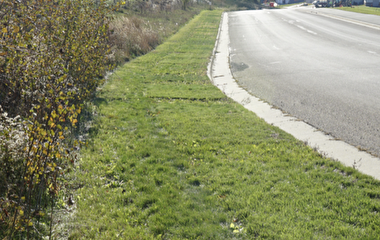The University of Minnesota has received a $12 million award from the National Science Foundation to bring together a unique network of scientists, industry leaders, and policy partners committed to building better cities of the future.
The project is directed by Anu Ramaswami, professor at the Humphrey School of Public Affairs at the University of Minnesota, with co-directors Patricia Culligan at Columbia University and Armistead Russell at Georgia Institute of Technology.
The network will connect nine research universities, major metropolitan cities in the U.S. and India, infrastructure firms, and policy groups. It is the first network of its size to focus on ways to reimagine infrastructure—road networks, energy grids, green spaces, and food and water systems—to create cities that are highly functional, promote the health of residents and the environment, and are desirable places to live and work.
“We have to think in new ways about a city’s physical infrastructure to develop sustainable solutions,” says Ramaswami, the Charles M. Denny, Jr. Chair in Science, Technology, and Public Policy at the Humphrey School. “Understanding that these systems are interconnected serves as a foundation for this work.”
The project will focus on a new movement gaining momentum in cities around the world toward “distributed,” or more local, infrastructure. Until now, development trends have resulted in very large infrastructure systems such as large roadway networks and power grids. Emerging trends suggest cities may be better off building more local systems—bike-share systems, local solar generation, and more. The new network will try to identify the best mix of local and large to achieve urban sustainability, health, and livability goals by examining infrastructure in diverse cities in the U.S. and India. The team will also explore the public attitudes and policies that can help achieve such urban transitions.
The work of the network is organized into three themes. The first theme will develop science-based methods to track the environmental sustainability, health, and livability of cities. It will draw on U of M researchers from different colleges and disciplines. For example, by combining real-time tracking of well-being (using a smartphone approach) linked with social and infrastructural parameters, Associate Professor Yingling Fan assesses the interactions among people, infrastructures, and the environment as they shape health, well-being, and livability. Associate Professor Julian Marshall and Assistant Professor Matteo Convertino study the influence of urban design on air pollution and health, bringing perspectives from the College of Science and Engineering and the School of Public Health, respectively.
The second theme will identify the innovations needed in infrastructure design and social institutions. Researchers will draw upon new technologies being incubated in university laboratories as well as infrastructure innovations being piloted in real-world test-beds in partner cities. For example, Humphrey School professor Greg Lindsey and associate professors Jason Cao and Jerry Zhao will identify key features that enable light-rail, car-share, and bike-share programs to succeed.
The third theme will operationalize the new knowledge to model various policy and technology scenarios in diverse world cities.
“Our project presents an exciting new networked model for research and education, where students, faculty, and professional partners from the different universities will take courses together and work together to study infrastructure solutions in different cities,” says Fan, a co-investigator on the project.



